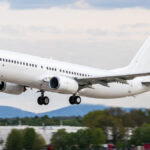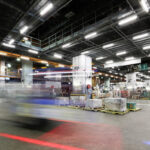The air freight industry is deeply intertwined with global trade dynamics, and after the increasing volatility over the past few years, the industry has been directly affected. As a result of these issues, it is estimated that in 2022 the industry alone experienced a total financial loss of between US $ 20-50 billion worldwide.
Shiping market and demand patterns
The global air load landscape undergoes a significant transformation due to the shifting of consumer preferences, buying behavior and the rapid expansion of e-commerce.
This has led to a varying product volume and a significantly increased product diversity. The continued growth of border-border e-commerce drives the demand for faster, more agile air freight solutions, especially for product deliveries. The emerging trend of ‘near -horn’ through which manufacturing moves closer to consumer markets changes the traditional air freight routes and requires greater flexibility in network planning.
This is made more complicated because of the uncertainty about fuel prices that create unpredictable price conditions for air freight operators. To navigate the impact of dynamically changing demand, it is most important for businesses to prioritize adaptability and data-driven decision-making. The use of technologies, such as AI, IoT and freight tracking systems, offers the industry large capabilities of monitoring in real time, improved demand forecast, increased resilience of supply chain and improved flexible production capabilities.
Capacity and infrastructure challenges
The air freight industry is experiencing rapid growth, which in turn exposes problems with capacity and infrastructure, as businesses strive to meet the surge in demand.
According to Iata, European carriers reported an 11.2 percent increase in air freight demand. Leading Cargo Hubs invest and implement automation, robotics and AI-powered sorting systems to increase production and efficiency in response to increasing demand. This tendency to use technical solutions is expected to figure out the industry to tackle capacity and infrastructure challenges.
Supply chain resilience and risk management
Trade restrictions, sanctions and geo-political tensions still affect global trade networks and thus air freight routes. Interrupts, in turn, increase operating costs, which create inefficiencies in routes and delays and jeopardize the loyalty of consumers. The digital transformation of the air freight industry offers opportunities and risks. While digital platforms and freight management systems provide improved efficiency and visibility, it also creates vulnerabilities for cyber attacks. Resilience and adaptability are the most important themes in the developing air load landscape. Stakeholders recognize the benefits of diversifying their service offers and the integration of various ways of transport.
By incorporating rail and ocean freight options into their logistical solutions, air freight suppliers can provide more comprehensive and resilient supply chain solutions to their clients.
Sustainability pressure
In order to resist air freight to resist growing sustainability pressure and work to reduce emissions in accordance with the net zero 2050 targets, the industry must embrace and proactively adapt to new carbon tax policies, the requirements for emissions and increasingly strict fuel efficiency standards. Although pressure is significant, it will probably not have a major impact on the industry for the next five to ten years unless the government calls for fines.
Trends such as the increased investment in sustainable aviation fuel (SAF) that can provide up to 80 percent less emissions about its life cycle, while also helping to meet the regulatory requirements, is likely to be increasingly popular. Although investments can have high introduction costs, businesses are likely to have significant long -term benefits. Similarly, the modernization of the existing air cargo fleet is another option to address sustainability pressure within the industry.
By replacing older aircraft with newer, more fuigficious models, airlines can achieve significant reduction in fuel consumption and emissions, while also improving operational efficiency and ensuring compliance with developing regulatory standards.
Further innovation is expected, as airlines and airports are still exploring new possibilities to reduce their environmental impact. This includes accepting electrical soil equipment, optimizing flight paths to reduce fuel consumption, and ongoing research on alternative fuel such as hydrogen and electric drive.
These emerging technologies have the potential to revolutionize the aviation industry and pave the way to a more sustainable future. As the air freight sector continues to change, participants in the industry must adopt agility, digitization and sustainability to remain competitive. Monitoring these trends will be essential to overcome challenges and to take advantage of new opportunities


